Cable Routing Options
Seven offers three kinds of cable routing to make every rider happy. These styles of routing have benefits and considerations worth spending a few minutes to understand. Internal routing isn't ideal in all cases, and classic external routing isn't right for everyone, either.
Internal routing is available on just about every bike we build and compatible with just about every feature and option we offer. Regardless, confirm that the Seven you want is available with the routing you'd like.
Internal cable routing is not retrofittable. We cannot install it on a preexisting frame. External cable routing usually can be added after the fact. However, there are exceptions to every rule.
Classic External Cable Routing
Simple, light, easy to maintain
This is what we've always offered.
Get this system if you're looking for universally understood and easily serviceable routing.
Pricing: No charge
Benefits relative to internal routing:
- It's the lightest routing possible.
- This routing works with nearly all standard bike components and accessories. No special or unusual components required.
- Service and maintenance are easy:
- Your bike mechanic will appreciate it.
- Service costs are lower than internal routing.
- Service intervals are a lot longer than for internal routing.
- Safety: You can see when something is going wrong and take care of it before it becomes a ride-ender or safety issue.
- Universal: Works with any shifter and brake systems
- If you travel with your bike:
- External routing is much easier and faster for packing and assembly.
- Any bike shop can service your bike and will have replacement parts.
- If you bikepack you'll be able to fix just about any mechanical much more easily than with internal routing.
Considerations compared to internal routing:
- It's not the newest thing.
- If you ride in freezing conditions, full housing can be better, and many internally routed systems use full housing. Seven's internal routing employs full housing. However, external routing can easily be ordered with full housing, too.
Compatibility with industry component standards
This routing works with nearly all standard bike components and accessories. No special or unusual components required.
Upcharge: None.
Inline Internal Cable Routing Through Headtube Ports
Clean lines, contemporary, versatile model compatibility
This is similar to — and an improvement over — what most riders mean when they talk about "internal cable routing." Seven's Inline Internal is unique in that housing runs through head tube ports rather than down tube. This makes the frame stronger and more durable.
Pricing:
- S and SL titanium and carbon models: $495
- XX titanium and carbon models: No upcharge
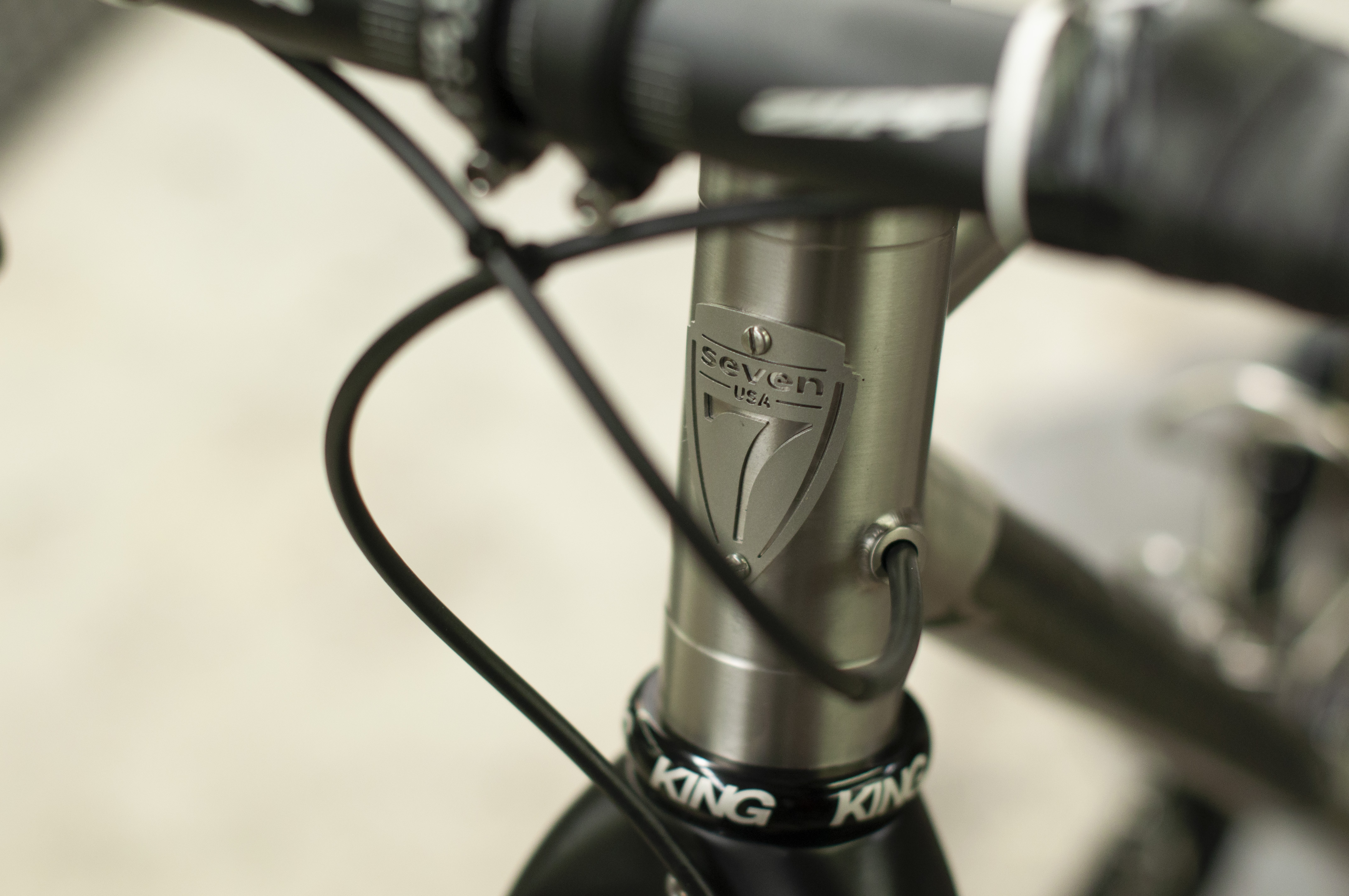
Get it because…
- It looks slick.
- It functions really well relative to most internal routing systems.
- It's more aerodynamic than external routing at high-speed.
- Seven's internals work with just about any category of bike: Road, gravel, mountain, plus, and fat.
- Seven's system is uniquely cross-compatible with Full Internal systems from Enve, FSA, and others that offer components that allow for internal routing that runs through the head tube and fork.
Don't get it because…
- You'll be using any cable actuated front derailleur other than Shimano GRX. Our design does not work with any SRAM, Campagnolo, or old generation Shimano front derailleurs.
- I don't want to spend more money:
- The internal routing option has an upcharge. It varies depending on the model and type of routing you prefer.
- Servicing internal routing is more expensive for your bike mechanic, too.
- I don't like to personally spend time maintaining my bike. Internal routing is a lot more time-consuming to work on.
- I like to minimize service intervals and the work my bike mechanic has to do.
- I want the lightest bike possible. Internal routing adds grams.
- I like a quiet bike. I don't want to hear any kind of rattling from my bike.
- I travel by plane with my bike and pack and reassemble it, not infrequently.
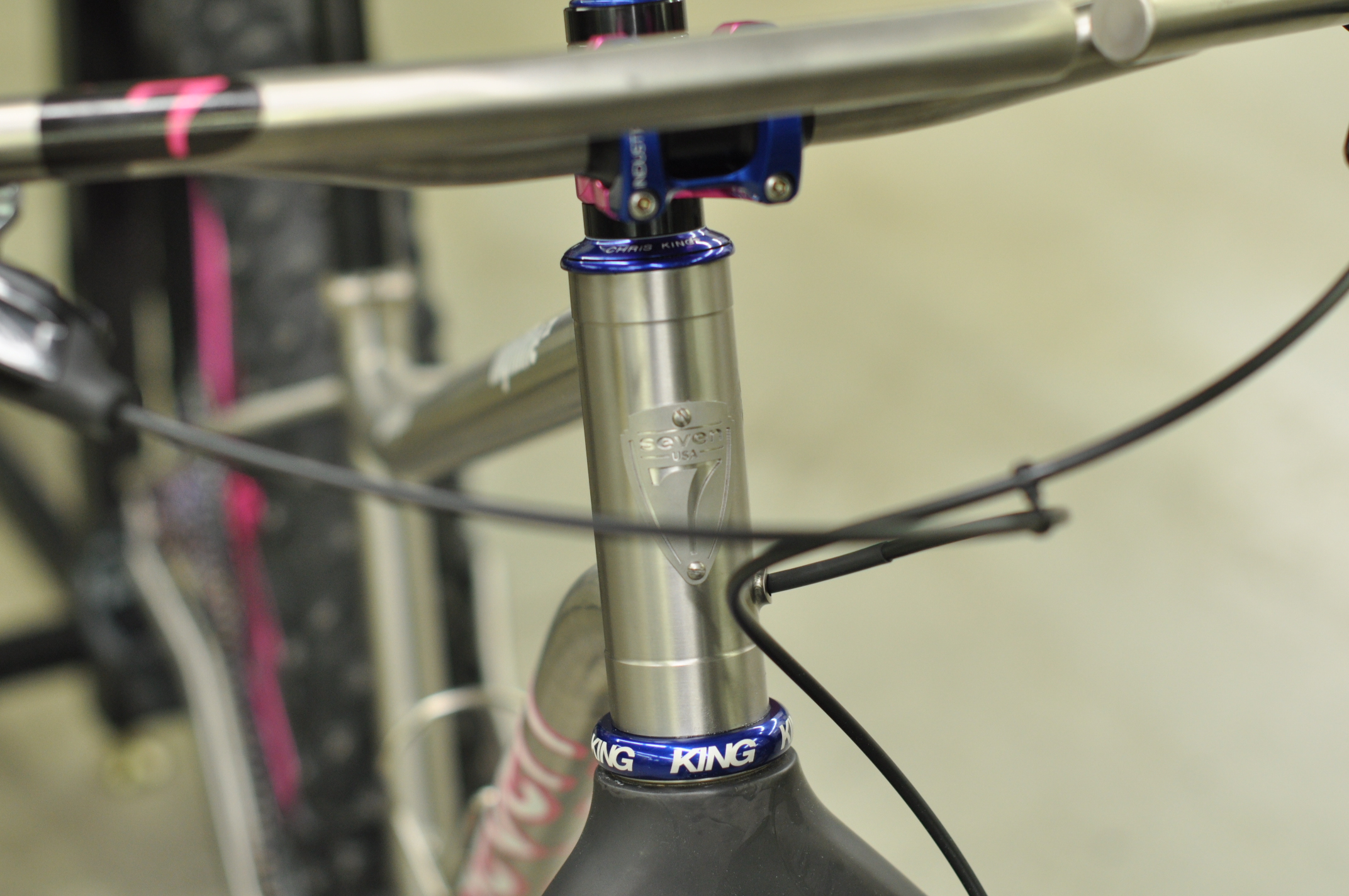
Headtube internal routing limitations
As with any feature Seven offers, internal routing is not a universal feature available on every bike.
Not available on these models:
- Dual suspension frames because there is no way to run contiguous housing internally.
- Tandems because of the eccentric bottom bracket shell.
- Short-reach caliper brake bikes — classic road bikes. Internal brake routing is not available.
- Medium-reach caliper brake bikes — classic randonnee-style bikes. Internal brake routing is not available.
Not available with these features:
- Cable actuated front derailleurs other than Shimano GRX. Our design does not work with any SRAM, Campagnolo, or old generation Shimano front derailleurs.
- Rear cable actuated shifting and Chopped Chainstay design.
- Bikes with eccentric bottom brackets: Singlespeed bikes and some other specialty bikes.
Internal routing requires these frame features:
- T47 bottom bracket system. The T47 bottom bracket shell is included in the price of the frame when ordered with internal routing. The T47 is a contemporary oversized threaded shell design.
- Oversized down tube of 1.5" (38.1 cm) or larger.
- Chainstay options: Any diameter we offer. Compatible with dropped and inline chainstays. To learn more about Seven's chainstay offerings, visit our chainstay page.
Compatibility with industry component standards
Seven's headtube internal routing works with nearly all standard bike components and accessories. No special or unusual components required.
Upcharge:
- Some frames, including S and SL models, have an upcharge associated with it depending on the features and options you choose.
- Internal routing is a no charge option with XX frames that include the tubeset specifications as described above.
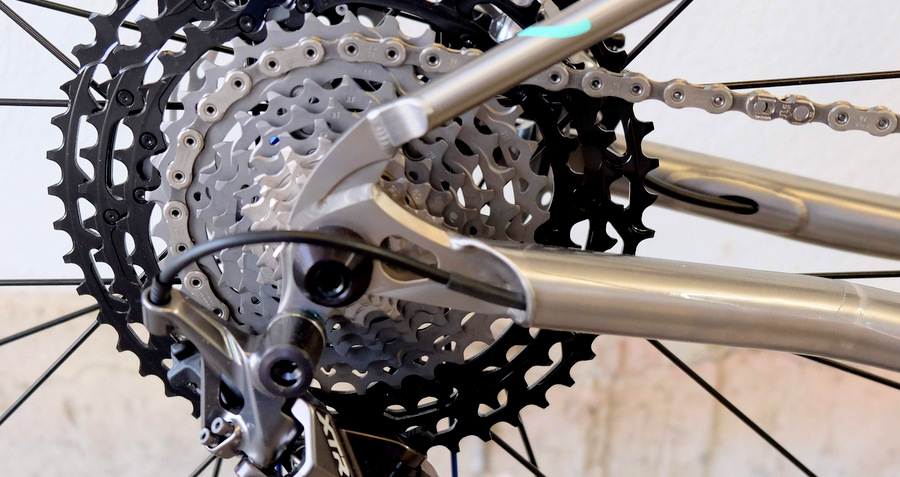
Internal Routing Considerations
Here is the full list of considerations for our internal routing option.
Internal routing is not retrofittable. The frame has to be designed from the ground up to accept Seven's method of internal routing.
More frequent service intervals. For bike setup instructions, visit our set up and maintenance page. That page explains these considerations in more detail:
- Fork steerer protection: The housing through the head tube will rub on the fork steerer. In order to maximize housing service life, and to protect the fork steerer from damage, install frame protectors on the fork steerer where it may touch the housing.
- Housing protection: The edges of each internal breather hole in the frame are the wear points in the system. To increase service life at the edges, we recommend using heat shrink sheathing at all contact points and ports to the frame.
- Bottom bracket spindle sleeve protector: You must use a bottom bracket system that includes a sleeve that will keep the housing from contacting the crankset spindle. Not all sleeves work with internal housing. The rotation of the spindle will prematurely wear the housing. This can be dangerous.
- Service interval: As with any high-end bike parts, the housing should be checked for cuts and damage periodically, and the system should be replaced at least once per season.
More likely to have issues: Your mechanic can't see what's happening, so you have to inspect the system more often.
Service cost and time: It is significantly more time consuming and costly to service an internally routed frame than external routing. However, Seven designed its system to be as easy to install and maintain as possible.
Noise: Internal housing can rattle inside the tubes. Any standard method for eliminating rattle will work with Seven's design. These systems add weight to the bike. Typically somewhere between 5 and 20 grams.
Not great for traveling: Depending on how you travel with and pack your bike, internal routing may not be the best solution. It can be slower to pack, with increased odds of damaging or kinking the housing. Not functional with S&S BTC coupled bikes.
Added weight: Seven's unique internal routing design adds about 20-40 grams to the frame depending on brake and shifter systems you've chosen and if you're using housing rattle eliminators. This is due primarily to the full housing requirement for internal routing.
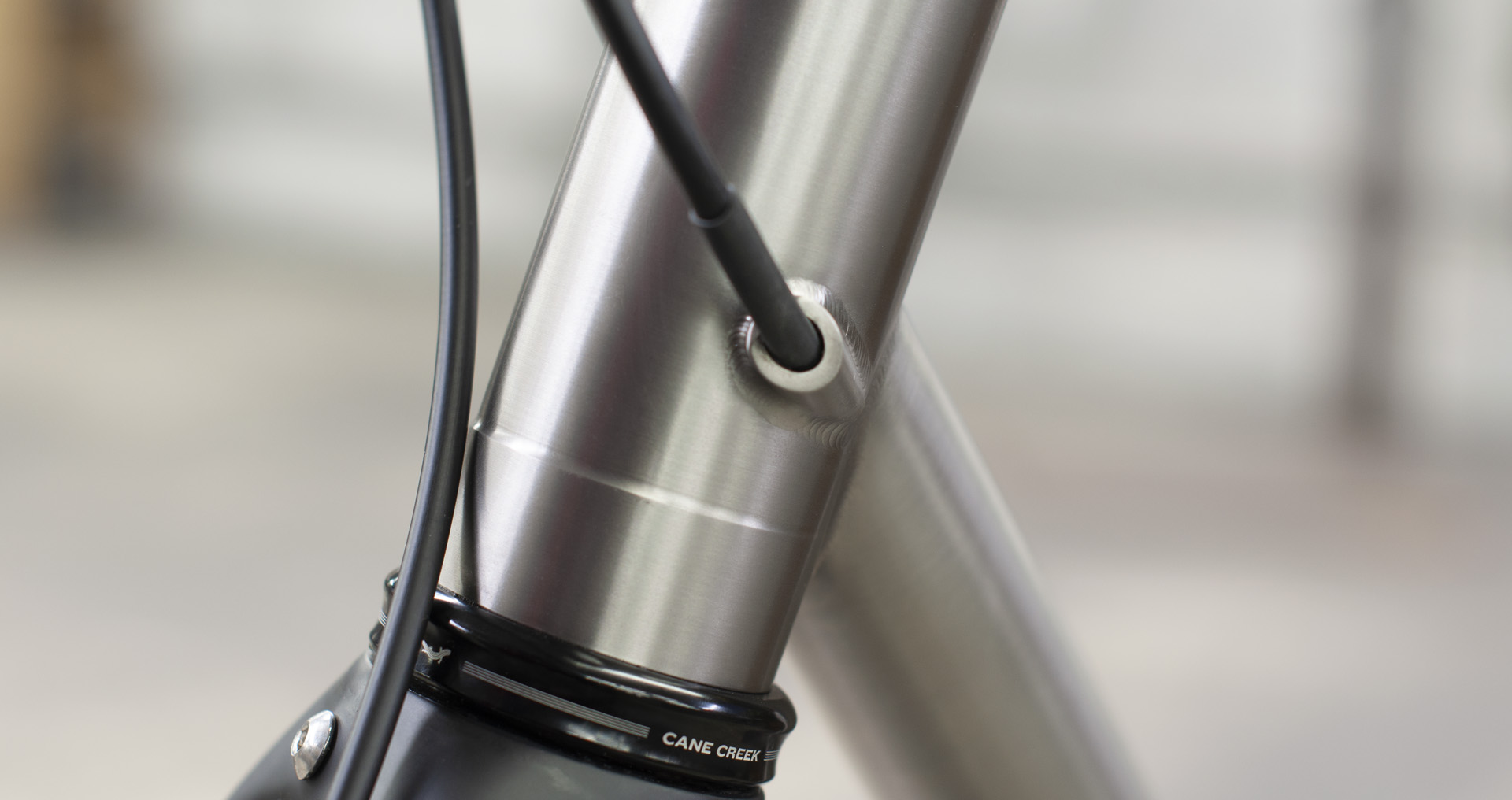
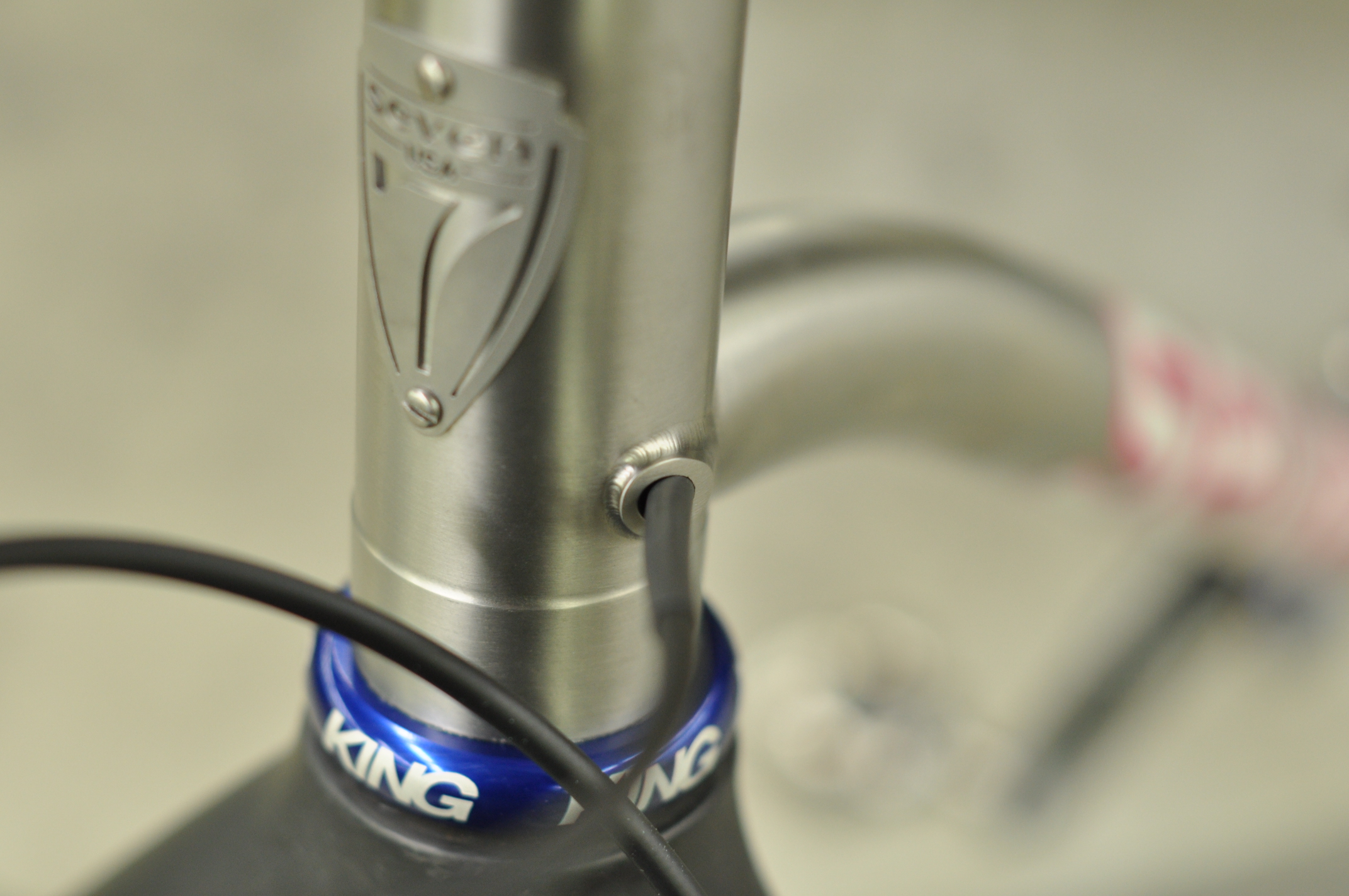
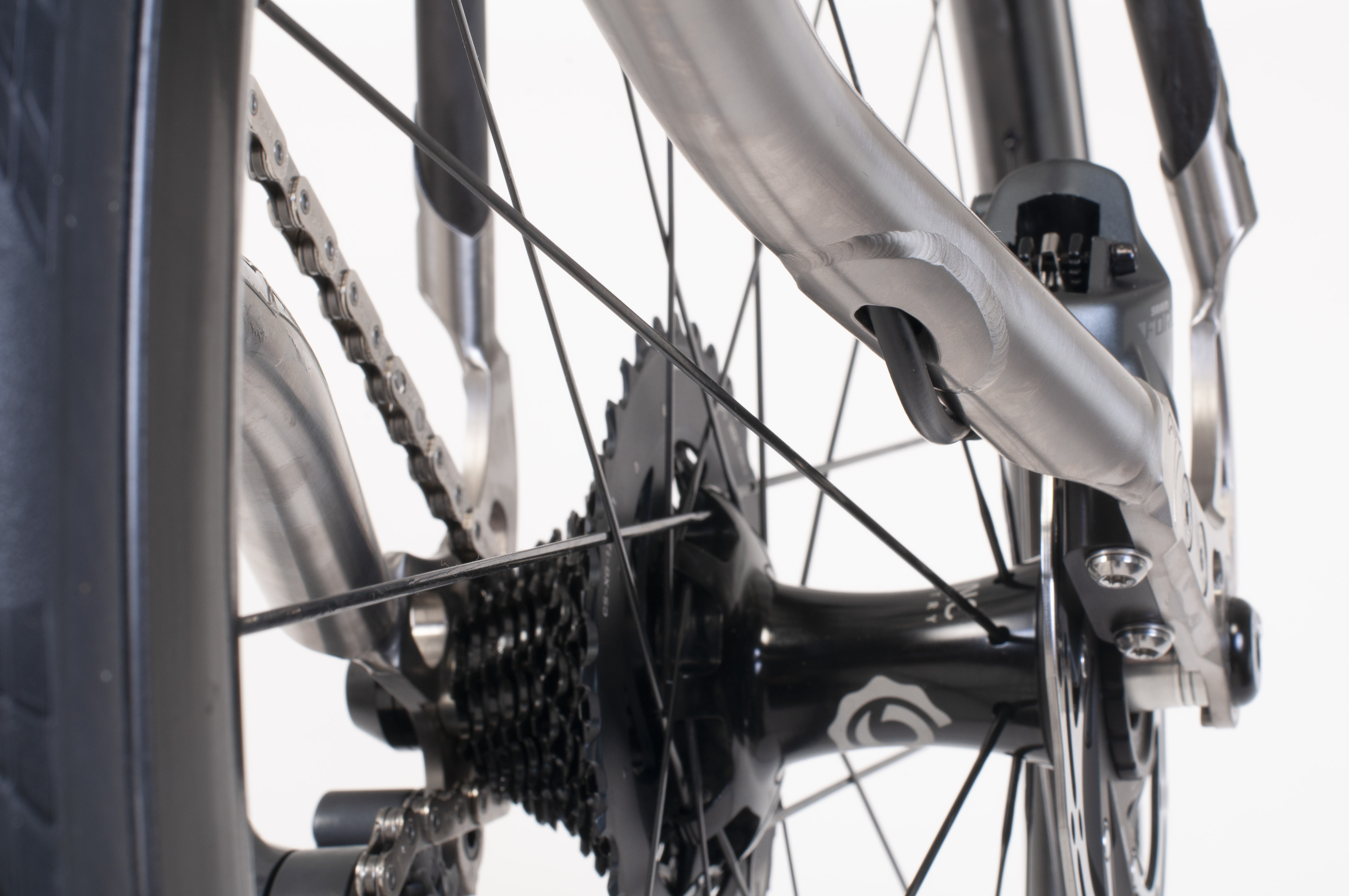
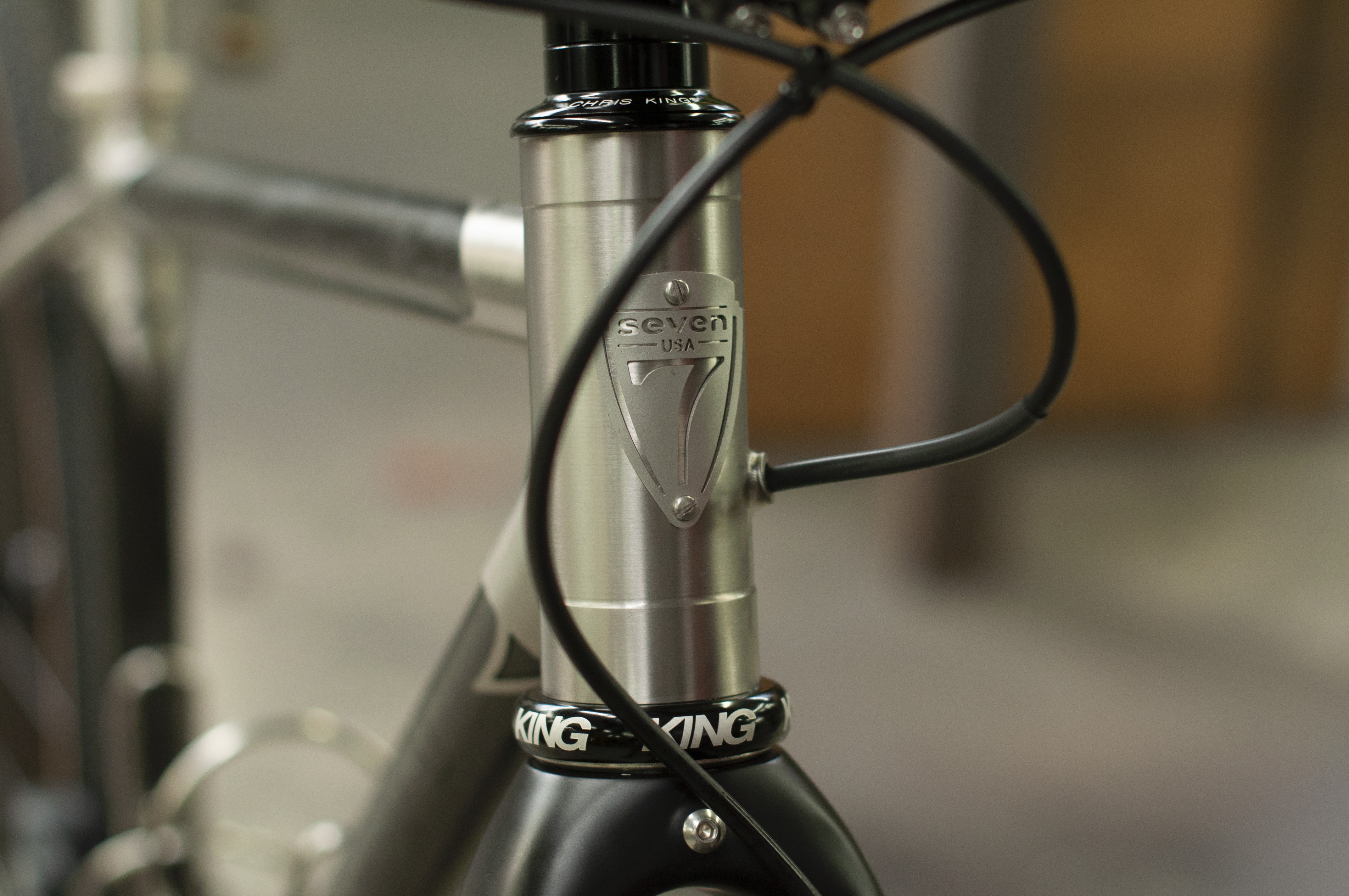
IN-Route Enve Cable Routing
Completely hidden housing, cleanest lines
This is Enve's full internal system. All of the housing and wires are fully hidden inside the bar, stem, spacers, headset, and head tube. It provides the cleanest look. The tradeoff is significantly more service and maintenance along with noticeably more drag on the bike's steering.
Pricing:
- S and SL titanium and carbon models: $495
- XX titanium and carbon models: No upcharge
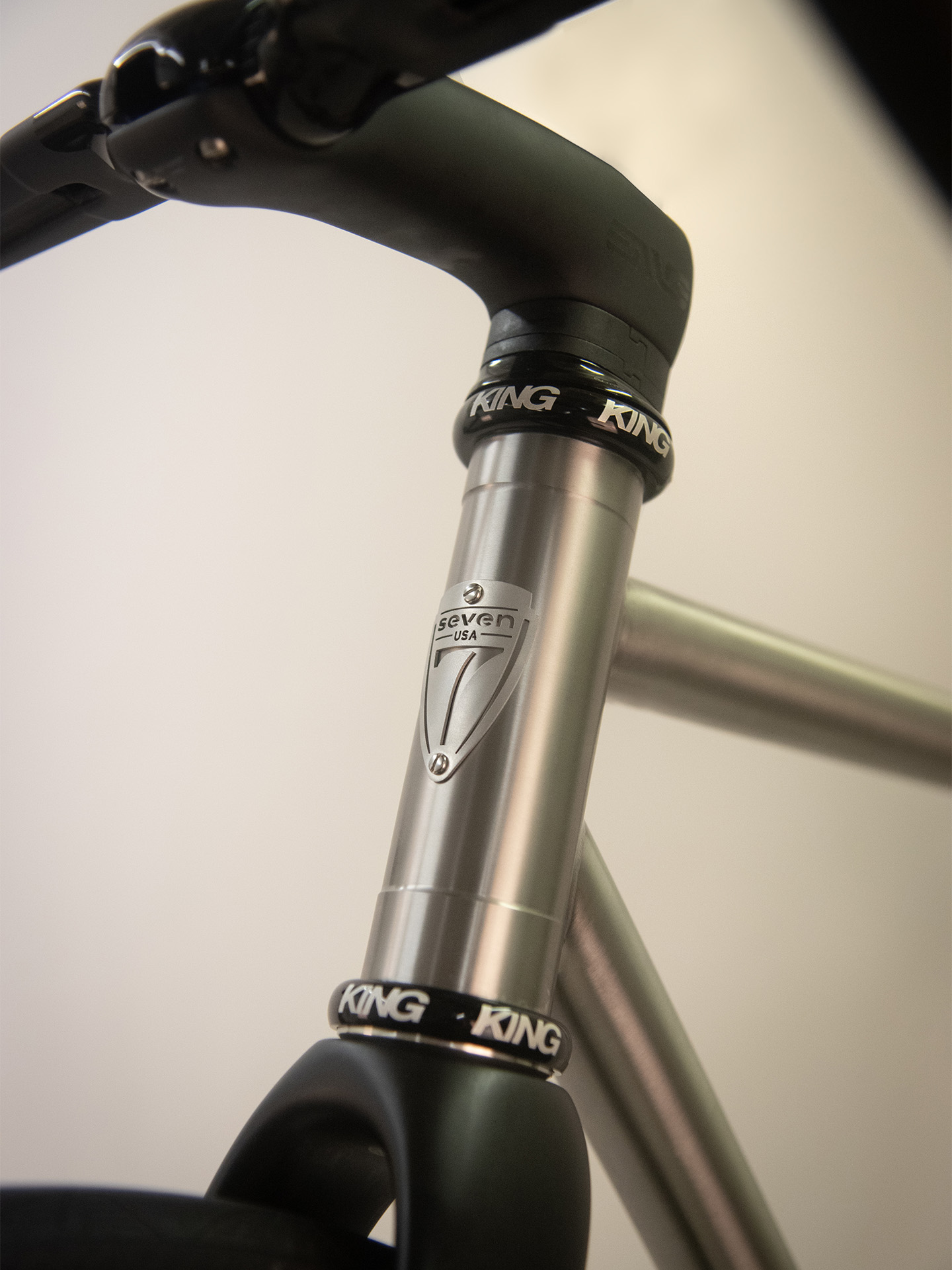
Get it because…
- It's invisible.
- It's the most aerodynamic routing at high-speed. Unfortunately, the savings is between 1 to 4 watts depending on which studies and who's marketing materials you look at.
Don't get it because…
- Your mechanic may hate you.
- Enve makes its IN-Route system available on road, allroad, and gravel bikes only. No adventure, mountain, fat, or specialty bikes.
- If you don't want any steering drag. The full internal system has a lot of parts jammed into the head tube. This means extra friction.
- I don't want to spend more money:
- The internal routing option has an upcharge. It varies depending on the model and type of routing you prefer.
- Servicing internal routing is more expensive for your bike mechanic, too.
- I don't like to personally spend time maintaining my bike. Internal routing is a lot more time-consuming to work on.
- I like to minimize service intervals and the work my bike mechanic has to do.
- I want the lightest bike possible. Internal routing and the specialized componentry add some grams.
- I travel by plane with my bike and pack and reassemble it, not infrequently.
Headtube internal routing limitations
Enve's internal system is available on a limited set of designs.
Available on these models only:
- Road disc
- Allroad disc
- Gravel
Not available with these features:
- Rear cable actuated shifting and Chopped Chainstay design.
- Bikes with eccentric bottom brackets: Singlespeed bikes and some other specialty bikes.
Internal routing requires these frame features:
- T47 bottom bracket system. The T47 bottom bracket shell is included in the price of the frame when ordered with internal routing. The T47 is a contemporary oversized threaded shell design.
- Oversized down tube of 1.5" (38.1 cm) or larger.
- Chainstay options: Any diameter we offer. Compatible with dropped and inline chainstays. To learn more about Seven's chainstay offerings, visit our chainstay page.
Compatibility with industry component standards
Enve's IN-Route system requires Enve's carbon handlebar, carbon stem, fork, a special headset, and special headset spacers. Enve is the only source for most of these parts.
Upcharge:
- Some Enve IN-Route component options cost more than their classic externally routed counterparts.
- Some frames, including S and SL models, have an upcharge associated with it depending on the features and options you choose.
- Internal routing is a no charge option with XX frames that include the tubeset specifications as described above.
Internal Routing Considerations
Here is the full list of considerations for our internal routing option.
Internal routing is not retrofittable. The frame has to be designed from the ground up to accept Seven's method of internal routing.
More frequent service intervals. For bike setup instructions, visit our set up and maintenance page. That page explains these considerations in more detail:
- Fork steerer protection: The housing through the head tube will rub on the fork steerer. In order to maximize housing service life, and to protect the fork steerer from damage, install frame protectors on the fork steerer where it may touch the housing.
- Housing protection: The edges of each internal breather hole in the frame are the wear points in the system. To increase service life at the edges, we recommend using heat shrink sheathing at all contact points and ports to the frame.
- Bottom bracket spindle sleeve protector: You must use a bottom bracket system that includes a sleeve that will keep the housing from contacting the crankset spindle. Not all sleeves work with internal housing. The rotation of the spindle will prematurely wear the housing. This can be dangerous.
- Service interval: As with any high-end bike parts, the housing should be checked for cuts and damage periodically, and the system should be replaced at least once per season.
More likely to have issues: Your mechanic can't see what's happening, so you have to inspect the system more often.
Service cost and time: It is significantly more time consuming and costly to service an internally routed frame than external routing. However, Seven designed its system to be as easy to install and maintain as possible.
Noise: Internal housing can rattle inside the tubes. Any standard method for eliminating rattle will work with Seven's design. These systems add weight to the bike. Typically somewhere between 5 and 20 grams.
Not great for traveling: Depending on how you travel with and pack your bike, internal routing may not be the best solution. It can be slower to pack, with increased odds of damaging or kinking the housing. Not functional with S&S BTC coupled bikes.
Added weight: Seven's unique internal routing design adds about 20-40 grams to the frame depending on brake and shifter systems you've chosen and if you're using housing rattle eliminators. This is due primarily to the full housing requirement for internal routing.
